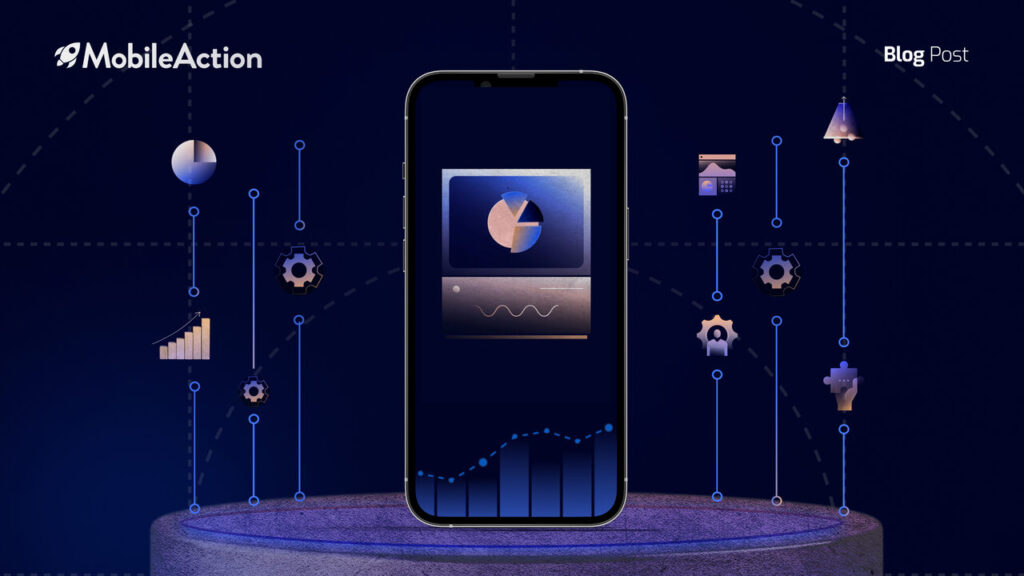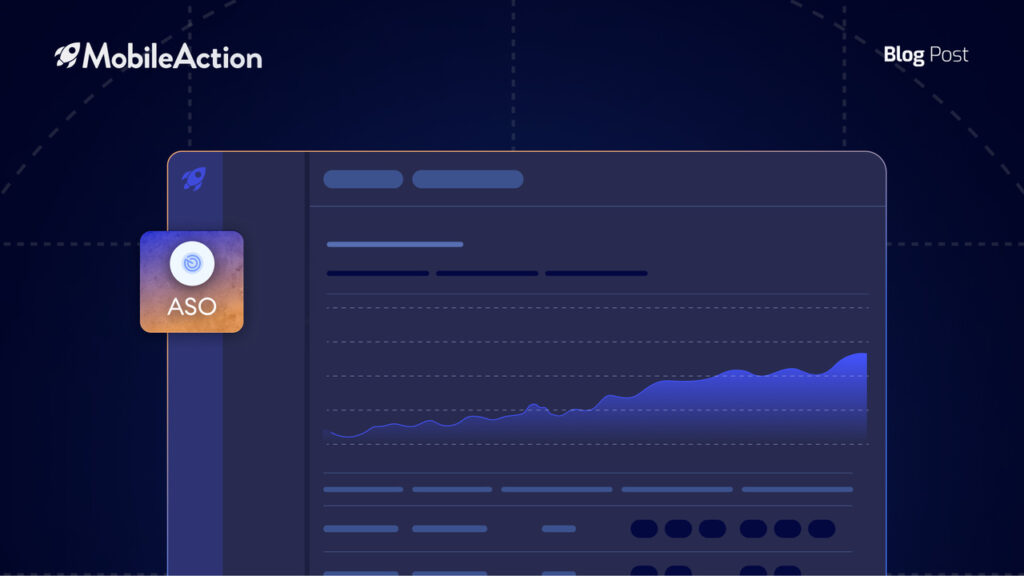MobileAction webinars, presented by experts in the field, continue to provide valuable information about mobile app promotion to their participants, answer their questions on this subject, and take the ASO strategies of the apps to the next level with their solutions.
In one of our most recent webinars, Multi Placement Ad Strategy on Apple Search Ads, Alaattin Yertürk, our Customer Success Manager, shared his valuable knowledge about the different ad placements that Apple Search Ads offers to its advertisers and how you can utilize them to the fullest to maximize the performance that you get from Apple Search Ads.
Also, he covered some more ground with ad variations and different use cases of different ad placements and ad variations combined, so that you can get the best strategies for maximizing your Apple Search Ads output.
You can visit our official Vimeo account to watch the full version of this webinar and to discover the talks of many experts from the mobile app industry. Or, if you are someone who prefers reading to watching, you can reach what Alaattin Yertürk has mentioned by reading this blog.
The Value of Apple Search Ads
Before we talk about ad placement formats, custom product pages, and the importance of multi placement, let’s start with the major value proposed by Apple Search Ads.
According to data, there are more than 650 million App Store visits happening every week. And 70% of the users who are going to download an application find it by searching for something. 65% of total downloads that are done with the App Store happen right after a search. And if you run Apple Search Ads campaigns, if you manage to get taps and manage to lead users all the way to your product pages, you are likely to have a 60% average conversion rate.
Obviously, this would differ from campaign to campaign and app to app, but these are the benchmarks. So in short, among all 650 million App Store visits, it is definitely a huge value for you to capture, to increase the number of downloads and active users, and basically traffic to your application.
Ad variations and custom product pages
So, what are custom product pages? On the App Store, obviously, your application is going to have metadata, which will consist of your app icon, your app title, your app subtitle, your app description, and some images of your app. Screenshots and images that describe your application are called product pages. At AppStore Connect, you can create up to 35 different product pages for certain types of users with certain types of design sets based on their specific interests.
So by utilizing custom product pages and ad variations, you can make sure that you are capturing all the various interests that are available in the market for your application. You can drive relevancy and conversions through creative optimization with the help of custom product pages. Custom product pages enable you to create numerous ad variations to highlight various features or content found in your app.
Creating ad variations through custom product pages can help make your search results ads more relevant to potential customers. Ad variations can be quite helpful in driving relevancy. For instance, they might be useful for focusing on new app features or functionality, catering to certain audience demographics, and taking advantage of seasonal events.
In this way, you can make sure that you are covering all the intent that is available so that you can maximize the number of downloads you receive for your application. Overall, it is key to capturing user interest and driving conversions.
Expedia’s custom product pages as seen on the CPP Intelligence tool
For example, as the CPP Intelligence tool developed by MobileAction shows above, Expedia utilizes different custom product pages for different keywords. When users search for those specific keywords, they are going to be directed to different product pages, depending on their intent.
As a further example, users who search for keywords such as “flight”, “hotel”, and “car rental” will see images on how to book a flight, how to make a hotel reservation, and how to rent a car in the Expedia application.
Expedia’s ad creatives collected from SearchAds Intelligence tool of MobileAction
So, what this means is that you can guide your users’ journeys. You can create a method that captures different intents with different elements within your application. Your applications might be multidimensional. So instead of promoting only a single feature of your app, you can offer flights, hotels, and car rentals at the same time. The only thing you should consider is that you should make sure that you are directing your customers to the correct product page so that you capture their interest.
While Apple Search Ads provides numerous opportunities to reach your potential audience, working with an Apple Search Ads Partner, such asSearchAds.com, can help you to maximize the performance of your campaigns.
At SearchAds.com, we have developed robust tips and strategies to help you achieve greater results utilizing Apple Search Ads.
Sabrina Chen’s comments on SearchAds.com
One of our testimonials from one of our valued clients, Sabrina Chen, Head of User Acquisition at RecRoom, stated that working with SearchAds.com and creating a strategy together with us enabled them to decrease their CPA by more than 45% within only five months. So, since there is huge potential to be discovered, if you follow the correct strategy, you can achieve very desirable results through Apple Search Ads.
Four Types of Ad Placements
Let’s now discover the four different types of ad placements, how they look, and what benefits they can offer.
1) Today tab ads
Today tab is the first screen that appears when we open the App Store. Therefore, Today tab ads will be a good option for those who want to raise awareness by showing their own app to every user who opens the App Store.
If your main focus is brand awareness and you are operating brand marketing campaigns, the Today tab ads will be a good fit for your strategy.
Since it is more of a brand marketing strategy, you can get people more accustomed to your brand, create more familiarity with your app, and then drive installs. After that, when they see your application somewhere else, maybe in the search results, maybe in organic searches, maybe on the web, maybe in your Instagram ads, or somewhere else, people will remember your app since you have created brand awareness on the Today tab.
2) Search tab ads
When an App Store visitor taps on the search button at the bottom right of their screen, it means that the user is going to search for an application. That is for sure, if you are not going to search for an application, you simply don’t visit the Search tab. According to official data, more than 70% of App Store visitors use search to discover apps. You can attract these clients’ interest with Search tab ads right before they start their search.
So it means that there is intent on the part of the user who is planning to download an application. But it doesn’t necessarily mean that the user is planning to download your application. Since it is a great way to capture even a small portion of the 650 million weekly App Store visitors, Search tab ads come in handy here.
Considering that a significant amount of these downloads are actually happening after a search, this means that there are going to be a lot of people visiting the Search tab, which means that you can, again, expose a lot of people to your brand by utilizing Search tab ads.
3) Search results ads
Customers can find your app through search results ads while they are looking for apps to download. When a user searches on the App Store, your ad can appear at the top of their search results.
The level of intent for this type of ad placement is very high because the audience captured is the people who took their phone in their hands, opened up the App Store, went into the search pad, typed a search term, and hit the search button.
It means that they are looking for something. They are looking for an application to download, which in turn means that if you are advertising on that specific keyword and if your application is obviously relevant to the keyword that is being searched, it is quite likely for you to receive some traffic from that specific keyword.
Search results ads can be seen right after a search, and the advertisement for the application appears at the very top of the search results as an advertisement.
4) Product page ads
Product page ads are the personal favorites of Customer Success Manager of Mobile Action, Alaattin Yertürk. Product page ads appear on the product page of another application in the “You Might Also Like” section of the App Store. While running product page ads, you can refine certain categories within your campaign.
This means you can specify where you want your product page ads to appear, such as in specific categories or apps related to your target audience’s interests. For example, if your application is in the travel category, you can target other travel-related apps with your product pages. By doing this, your application will appear on the product pages of various other travel apps, providing you with a competitive advantage through product page ads.
Additionally, using product page ads is an excellent way to increase brand awareness. With product page ads, you can potentially reach the user base of your competitors and create more awareness among people interested in certain application categories. They offer a unique opportunity to reach targeted audiences and increase brand exposure in a competitive market.
Why a multi placement strategy makes sense
Moving forward, let’s discuss the reasons why having a multi placement strategy can be beneficial. We suggest running multiple app placements on Apple Search Ads and developing a strategy around them.
The first advantage is increased visibility. By using multi placement ads, your application can reach a broader audience, enabling more people to see and learn about it. This approach allows you to capture various interests and attract a diverse user base.
The second one is scalability. In numerous cases, people struggle to scale up their Apple Search Ads campaigns. They may have a pool of keywords for which they run search results ads, generating decent traffic with desirable Key Performance Indicators (KPIs) while staying within their cost per acquisition (CPA) targets or preferred cost per tap range.
However, despite wanting to attract more users with the same cost per unit, they find it difficult due to the limited number of impressions available on the App Store each day and the restricted relevant keywords they can bid on, considering competition factors. Utilizing different ad placements can overcome these scalability limits, enabling them to reach a larger audience and increase app downloads.
Lastly, efficiency is a crucial aspect. By carefully implementing various ad placements and developing the right strategy, you can guide users to your product page more effectively. After initiating multi placement ads on Apple Search Ads, many advertisers have observed decreased CPAs and increased brand awareness, as the results influence different ad networks in terms of costs and user familiarity with the brand.
To summarize, these are the three main reasons why we recommend a multi placement strategy to all of you.
Combined multi placement strategies that will change the game
So ideally, if you have a certain amount of budget, you can divide this budget among the four different app placements on Apple Search Ads. This is why we suggest it, as I have been highlighting the different value propositions of each app placement. Each of them offers something unique.
If a budget is available, it’s recommended to cover as much ground as possible with all four ad placements. However, if you have a limited budget or prefer not to explore all four ad placements yet, there are specific considerations to keep in mind.
Firstly, the search result ads are crucial to capturing demand. If you don’t run search result ads, you could miss out on users searching for keywords relevant to your application. By neglecting this placement, you may lose the opportunity to tap into the existing demand in the industry. Therefore, search result ads should be prioritized in almost any combination of ad placements, as they help you capture users actively searching for your application.
Alternative ad placement combinations and their potential benefits
Combining search result ads with Today tab ads can enhance brand awareness. Today tab is the default tab that opens when users open the App Store, making it a highly visible placement. Running ads on the Today tab increases your brand’s visibility and familiarity among users, which can positively influence their decision to download your app when they see it in the search results. Personal observations show a positive impact on search result ads after running Today tab ads for one client, leading to an increase in brand awareness and overall positive results.
Adding product page ads to the combination brings even more benefits. With product page ads, you can appear on your competitors’ or various other applications’ product pages. This helps users learn more about your app and improves user perception through different elements presented in various custom product pages across different placements. By offering multiple elements within your application, users can gain deeper insights into your app’s offerings, which can positively influence their decision to download.
Another alternative is combining search result ads with Search tab ads. When a user moves to the Search tab, it indicates a strong intent to download an application. By running Search tab ads alongside search result ads, you can ensure you capture all potential demand for your app. This combination ensures your app is present where the demand actually exists.
In summary, there are several combinations of app placements to consider, and the best choice depends on your specific application, target audience, and budget constraints. Before committing to advertising on all different app placements, take the time to explore different options and test their performance to make informed decisions.
Each application is unique, and audience preferences may differ from one geography to another. So, it’s essential to explore various approaches and combinations to optimize your advertising efforts effectively.
The Premier Mobile UA Optimization Platform
Before wrapping up, the benefits that our company, SearchAds.com by MobileAction, can provide regarding your Apple Search Ads efforts should be highlighted. Our smart tools offer different intelligences for various aspects of your mobile app marketing journey. Here’s what you can gain from each:
Countless benefits come from our smart tools
With our intelligence tools, you can stay ahead of your competitors and the industry. You can continuously refine your strategy and stay informed about the latest developments. Additionally, you have the option to set up email alerts so that you never miss critical updates, even if you can’t check daily.
By leveraging our intelligence tools, you can gain a competitive edge and make well-informed decisions to optimize your Apple Search Ads performance and overall mobile app marketing efforts.




